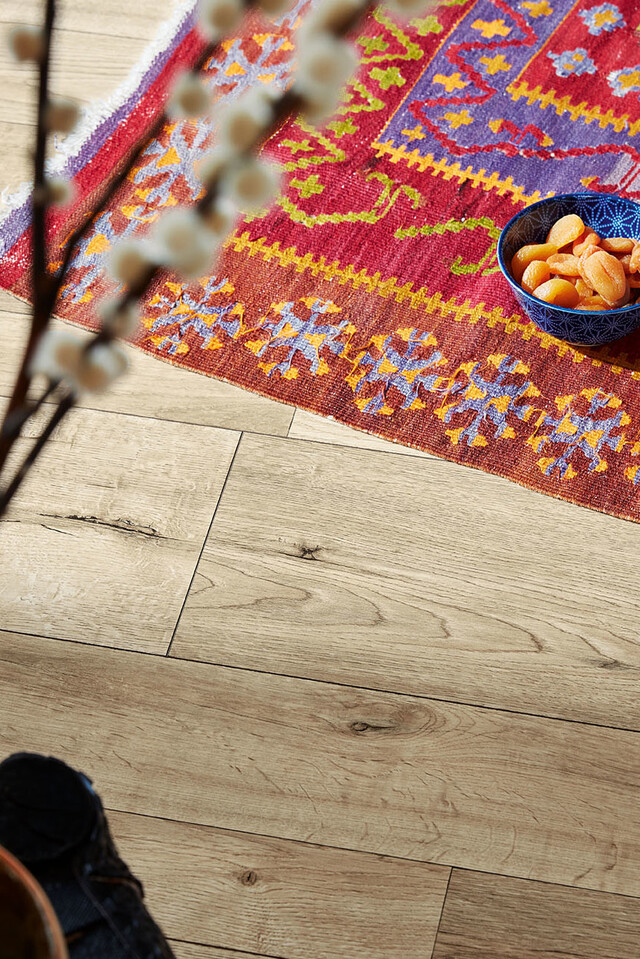


“Fly around the world with me” – with these words, Aladdin invited Princess Jasmin to dive with him into a dream from 1001 nights. If you don't want to leave your own four walls, but still want to experience the magical charm of the Orient, you can conjure up a home in an Oriental style with very simple means.

People crowd through narrow alleys, the scent of various spices is in the air, market criers tout fresh fruit. One stand further on, locals haggle with the merchant dressed in white, wide robes for the best possible price for a colourful, hand-woven carpet to be used as a wall decoration at home. Scenes such as these are typical of the Orient and have always fascinated visitors from the West. If you are looking for something foreign and exotic, you may like to travel to one of the countries of the Arab world, where not only the way of living, but even the way of furnishing your home is very different from our own. That may be why many people enjoy adding a touch of this decor culture to their own home. It makes us dream of a world that we know as an inspiring holiday destination and which we have internalised as mystical and magical thanks to the One Thousand and One Nights.

The special flair of the Orient can be conjured up within your own four walls with just a few small details. Typical examples are coloured glass tealight holders and lanterns decorated with ornaments. Arranged on a silver, gold or copper-coloured tray, they fit wonderfully into the theme while, at the same time, providing cosy light. Another genuine style element is a Moroccan teapot on an occasional table with the appropriate cups – ideally made of glass, silver or copper. Vases and bowls made of these materials also fit into the theme. Look out for the bulbous shape characteristic of the Arab style. This applies in particular to Oriental lamps. Whether it’s a pendant lamp, wall lamp or lantern – almost all models have the typical curves. Mirrors with ornamental decorations in the frame are not only useful for checking your own appearance, they also look just as good as decoration in the bathroom, bedroom, hallway or living room. If you take these tips for oriental decoration to heart. you’ll have already taken a big step towards bring the Orient into your own home.

Another characteristic of the Arabic region is interior decoration with colourful fabrics. Oriental fabrics with geometric or arabesque, i.e. ornate patterns, are ideal for decorating a living room with the flair of stories like those of Aladdin. There are various options. In the bedroom, for example, the fabrics can serve as a bedspread. If they’re combined with colourful cushions, the desired look can be achieved in no time. If you have available space, you can also use the fabric as a wall art. The same applies, of course, to the living room – as long as you have a free wall. The fabrics can also be used to brighten up the sofa: just lay the cloth over it as a throw and the piece of furniture will take on a different look.
When they think of the Orient, many people imagine colours such as gold, copper, silver and various shades of brown and red. But there’s more to the East than that. If you furnish your home in oriental style, you can follow your own personal taste: multi-coloured or plain white in combination with silver and a few colour accents. The latter, however, represents a more modern interpretation of a Moroccan decorating style.

The same rules regarding colours and patterns apply to a classic of Arab culture: the carpet. With floral, tendril patterns or geometric shapes, it can be used as an excellent wall decoration to replace fabric. But even on the floor, an Oriental carpet or rug contributes to the desired look like almost no other accessory. The floor on which such a rug has the best effect depends on its colour. If the flooring is light in colour, such as the Laminate flooring MeisterDesign. laminate LD 55 Bayfield oak 6679, a rug in dark tones makes for a particularly striking contrast. If you prefer tone-in-tone, it is better to place such a rug on a dark floor, such as the Lindura wooden floor American walnut lively. Wooden floors have a cosy appearance by nature, and this can be enhanced by a rug. In addition to carpets and rugs, tiles on walls and floors with the right patterns can also provide Oriental flair. For practical reasons, these are particularly suitable for the bathroom and kitchen. It’s not necessary, however, to retile. There is now a colourful range of films and stickers available that can be used to easily conceal the tiles for the desired purpose.




If decorative accents are not enough for you, you can also invest in some furniture in the style of the Orient. Matching furniture such as tables or cupboards are mainly made of wood and often decorated with delicate carvings. The same applies to an authentic screen Paravent, which can be an excellent room divider or decorative element in the bedroom or living room. Sofas are rather low in the Arab world and, thanks to a sumptuous layer of cushions, are usually very comfortable. Other typical Oriental seating arrangements include poufs – special seating cushions covered with leather or fabric. Colourfully patterned seating cushions in a classic form are perfect for relaxing in the style of 1001 Nights. Wherever you sit, a table is usually not far away. When looking for the right product to give your own four walls an Oriental look, there is a large selection. Whether it’s a coffee table or an occasional table, small and round or large and polygonal – the main thing is to decorate it with ornaments.
Bildnachweise: ©Eduardo C, Li Yang, Martin Zangerl, Rachel Magpayo (unsplash.com)